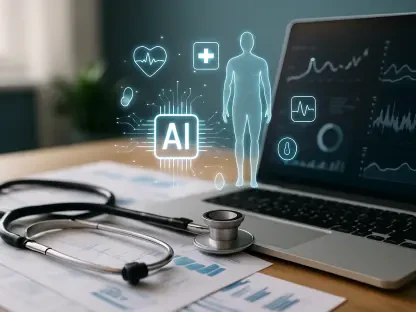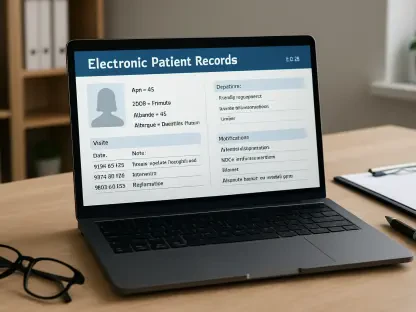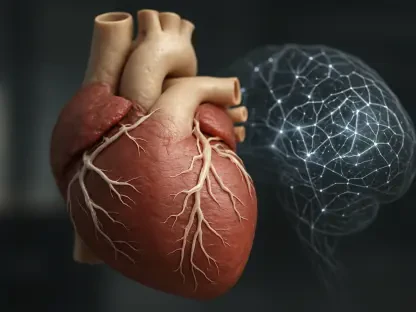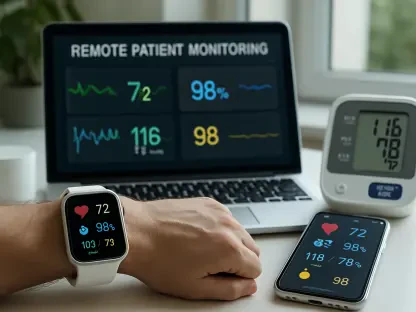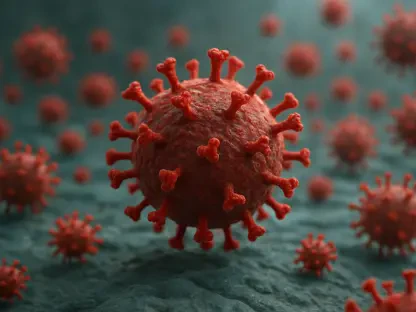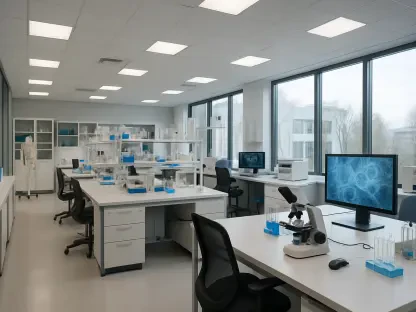In the rapidly evolving field of radiology, artificial intelligence (AI) stands out as a transformative technology poised to elevate the accuracy and efficiency of mammogram analyses. The utilization of machine learning algorithms and advanced data analysis tools is reshaping how radiologists interpret complex medical images, particularly in the detection of breast cancer. A recent study has delved deep into AI’s potential as a decision support instrument that enhances radiologists’ focus, potentially revolutionizing the process of detecting suspicious lesions. This technology holds promise not only in improving diagnostic accuracy but also in maintaining or reducing reading times, making it a promising advancement in medical imaging.
AI’s Influence on Radiologist Performance
Enhancing Diagnostic Accuracy
AI’s integration into mammogram analysis significantly affects radiologists’ ability to accurately diagnose breast cancer. Through sophisticated algorithms analyzing eye-tracking data, researchers observed that AI directs radiologists’ focus toward suspicious lesions and other relevant regions in mammograms. This improved attention to detail led to increased sensitivity and specificity, as demonstrated by enhanced performances in areas under receiver operating characteristic curves (AUCs). High AI suspicion scores prompted radiologists to carefully scrutinize images, consequently refining detection rates. Conversely, low suspicion scores allowed radiologists to swiftly clear images of cancerous appearances, ultimately reducing the time spent on analyzing evidently normal cases.
The deployment of AI in radiology is not intended to replace human expertise but rather to complement it. By guiding radiologists through complex image analysis, AI ensures thorough evaluations of potential cancerous regions while minimizing unnecessary attention to areas less likely to harbor lesions. Additionally, AI-powered systems offer radiologists additional insights into mammogram interpretations, streamlining their workflow. Consequently, this technology provides reassurance to radiologists and bolsters the confidence with which they make critical diagnostic decisions, fostering higher standards of care in breast cancer screening.
Impact on Search Strategy and Efficiency
The introduction of AI in mammogram analysis has fundamentally transformed radiologists’ search strategies, enabling them to utilize a more targeted approach. Research indicates that with AI support, radiologists spend significantly more time examining lesion-containing regions while focusing less on areas devoid of anomalies. This strategic shift leads to a reduction in total breast fixation coverage and ultimately enhances diagnostic performance and efficiency. Shortening the duration spent on normal areas allows radiologists to concentrate their efforts on detecting potential malignancies.
The efficiency gains attributed to AI translate into significant workflow improvements that benefit both radiologists and patients. By optimizing the examination process, radiologists can work more effectively through extensive mammogram datasets, allowing for a higher throughput of analyzed images. Reduced analysis times not only streamline the diagnostic workflow but also reduce the mental and physical strain on radiologists, promoting better overall quality of care. Consequently, AI plays a vital role in improving the pacing and precision with which radiologists perform critical mammogram assessments, aiding in earlier and more reliable cancer detection.
Future of AI in Mammography
Complementing Human Expertise
The advent of AI in mammogram analysis has sparked pivotal discussions about its potential role in the broader field of radiology. As AI technologies evolve, their capabilities in identifying cancerous tissues continue to improve, thus offering vital support to human radiologists. Experts agree that the future of diagnostic imaging lies in the symbiotic relationship between radiologists and AI. The technology complements human skill by efficiently managing large volumes of data and highlighting areas of concern that might be overlooked in manual inspections.
Furthermore, AI’s ability to adapt and learn from new data means that its diagnostic proficiency will only increase over time. As advancements continue, AI-driven systems will become integral components of comprehensive screening programs. The shift towards AI-enhanced analysis underscores the commitment to improving early cancer detection and patient outcomes. Establishing this collaborative paradigm ensures that radiologists remain at the forefront of medical diagnostics, armed with cutting-edge tools to deliver life-saving insights with unprecedented accuracy and efficiency.
Anticipated Advancements
Looking ahead, AI’s role in mammography is anticipated to expand further, with ongoing innovations promising to refine its capabilities. The tech community is investing heavily in research and development to optimize AI algorithms, ensuring they provide ever more precise interpretations of mammograms. Investment in AI for radiology seeks not only to enhance technical performance but also to integrate seamlessly with existing healthcare infrastructure. This focus on adaptability will mitigate potential disruptions and smooth the integration of AI into clinical practice.
The continued dialogue among radiologists, technologists, and policymakers underscores a shared vision for AI’s role in nurturing more personalized and accurate healthcare delivery. Anticipated developments in AI-driven mammography will likely lead to more standardized diagnostic protocols and improve patient outcomes across diverse populations. As AI technologies mature, they will facilitate the transition towards more efficient, patient-centered care, ultimately contributing to broader public health initiatives directed at cancer prevention and treatment enhancement.
Embracing a New Era in Radiology
In the fast-paced world of radiology, artificial intelligence (AI) emerges as a game-changing technology with the capacity to enhance both the precision and speed of mammogram analysis. Through the application of machine learning algorithms and sophisticated data analysis tools, AI is transforming the way radiologists interpret intricate medical images, especially in the early identification of breast cancer. Recent studies have explored AI’s potential as a decision support tool, one that not only aids radiologists in honing their focus but also holds the promise of revolutionizing the detection of suspicious lesions. This cutting-edge technology aims to improve diagnostic accuracy without extending the time required for image reading. By integrating AI into medical imaging, radiologists can achieve more efficient and accurate outcomes, ultimately benefiting patient care. Thus, AI stands at the forefront of innovation in radiology, presenting a promising advancement that could redefine traditional methods and ensure better health outcomes.


